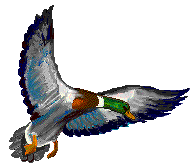
Editorial Address
Manuel A. Alarcon
Andy Salvador
Jay de la Cruz
Care of:
malarcon@magiribahan.com
1095 Market Street
Suite #312
San Francisco, CA 94103
Tel.(415) 431-6150
Fax (415) 431-9208
BACNA tells its
story
Sometime in 1987, a group of
local residents
from Camarines Norte, Philippines
realized
the need to have a
formal
representation to the
Bicol association
running the
annual Penafrancia affair
in
the SF Bay Area. A set
of officers were
then informally selected.
FULL STORY
18th Annual BNAA
convention to be
held in New York,
August 1-2, 1998
In a little more than 30 days,
delegations from different Bicol
Chapters throughout the United
States will gather in New york.
Under the leadership of Bicol National
Association of America (BNAA) Pres.
Ramon Belleza, Bicolano and sundry
interest will take center stage.
FULL STORY
|
IRIGA (BICOL) ASSOCIATION OF AMERICA
597 Fallen Leaf Circle, San Ramon, CA 94583
(925) 277-9228
One Sunday, June 9, 1968 at three o'clock p.m. fourteen Iriguenos gathered together as guests of Mr. & Mrs. Prirnitivo Sonido. It was the wedding awilversary of the host and hostess and a town fiesta celebration as well. The feast of St. Anthony de Padua, Iriga's Patron Saint, is on the thirteenth of June of every year. The couple celebrated it every year in their home with Iriguenos who were in the Bay Area.
The fourteen people present, together with the host and hostess decided to continue Mr & Mrs. Sonido's yearly tradition of celebrating the feast of Iriga's Patron Saint. The purpose is threefold: to strengthen the spirit of camaraderie among the Iriguenos in America; to preserve Iriga's cultural tradition and to help the church of Iriga and the city as a whole.
The following were the frst elected officers of the association: Mr. Glen Olea, President; Erudita Sonido, Vice President; Dr. Pilar Catangui-Moncada, Sec /Treasurer; Jules Nacario, Auditor; Romeo Mora, PRO. The first fourteen members present aside from Mr. & Mrs. Sonido were: Mr & Mrs. Glen Olea, Mr. & Mrs. Alfeo Antang, Mr. & Mrs. Jules Nacario, Mr. & Mrs. Romeo Mora, Mrs. Rafael Cerillo, Mr. Mateo Magistrado, the then Ms. Aurora Nagrampa and Mr. & Mrs. Fausto Moncada.
At present the association has around one hundred members. The association has turned out college graduates since 1981 up to the present. Help to an outstanding but highly deprived student graduate in high school is an on-going project. Donations such as books, sports equipments, teaching aids, curricular materials are top priority by the association to benefit the schools and the city of Iriga, in general.
Erudita Sonido 1970-72
Honorato Orbon 1972-74
Alfeo Antang 1974-76
Froilan Ramos 1976-78
Pilar Catangui-Moncada 1978-82
Romeo Mora 1982-84
Lilian Andalis 1984-88
Aurora Nagrampa 1988-90
Renato S. Mora 1990-92
Josephine A. Paz 1992-94
Jose A. Sesno 1994-98
ORIGIN OF IRIGA
Iriga was but a sitio of the town of Nabua when the first
Spanish authoritiies finally gained control of the Bicol peninsula. It was
then called Y-Ragga. This was a term in the Nabua dalect which, in the
Spanish language means "Lugar donde hay tierra." To the natives it was a
term connecting ownership of a piece of land in that hilly. isolated place.
In those days Nabua was often flooded by the Bicol River.
This prompted the parish priest, Fray Felix de Huertas, to advise the people
to cross the water to Y-Ragga where crops could be raised in abundance. Many
people obeyed him and Y-Ragga became a very progressive barrio.
There are no records to show who was the first Cabeza de
Barangay. It is known, however, that the establishment of the town rested
greatly on the efforts of two untiring missionaries: Fray Pablo de Jesus and
Fray Bartolome Ruiz. In 1578 the first church was set up. A tribunal and a
school were constructed. San Antonio de Padua was chosen as the patron saint.
Fray de Jesus and Fray Ruiz are also credited for foundng the first four
barrios namely: San Antonio Abed, San Agustin, San Isidro. and San Nicolas.
In 1863 Y-Ragga was separated from Nabua. It became a flourishing town with
its barrios springing up one after another.
The name of the town was changed to Iriga because the
Spaniards had difficulty in pronouncing the name of the town. Now Irga is the
third chartered city in the Bicol Region with 37 barrios named in honor
of saints. She was chartered as such on September 3, 1968.
Thank you for dropping in.

(Since October 18, 1999)
Front Page
|
